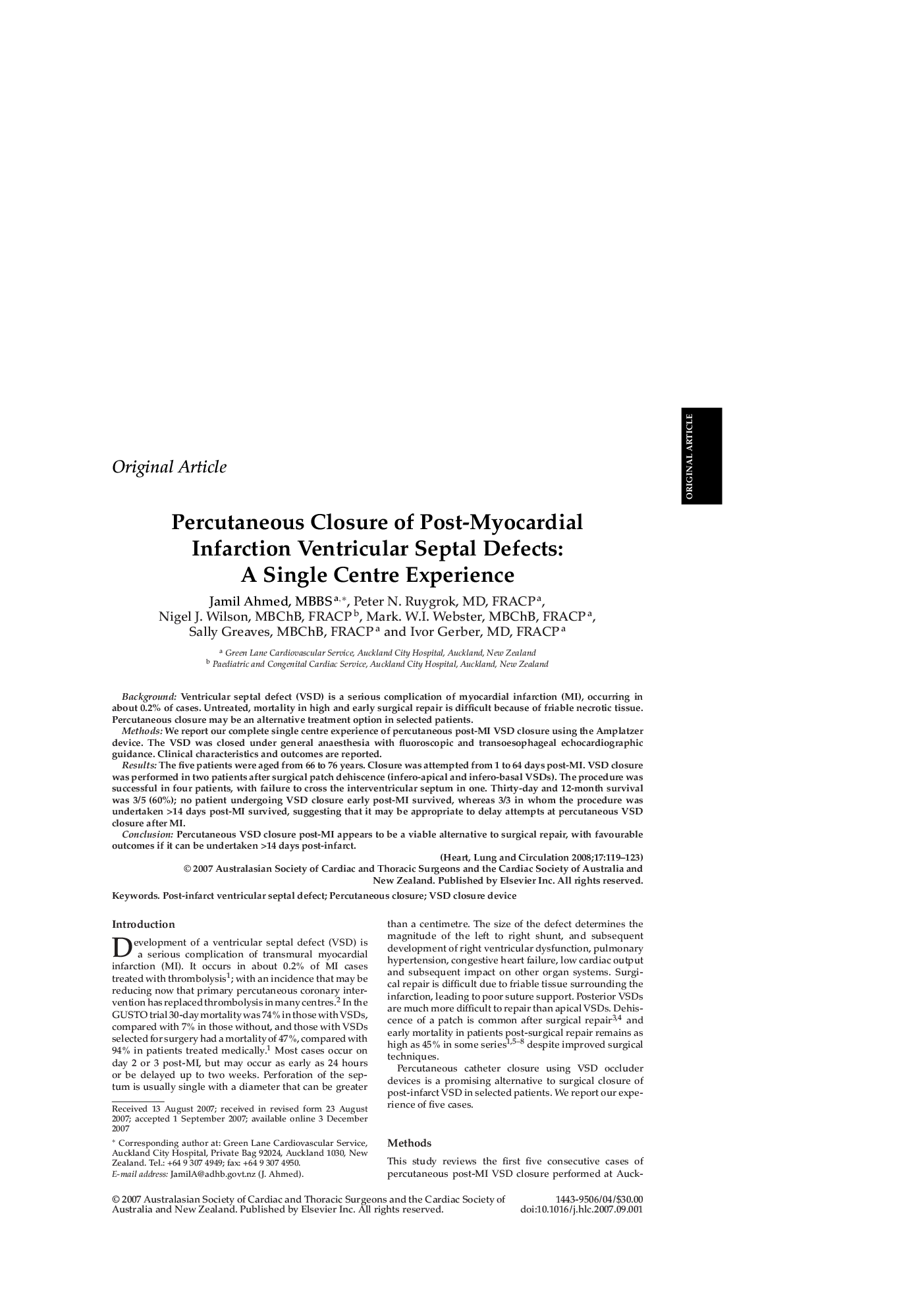| Article ID | Journal | Published Year | Pages | File Type |
|---|---|---|---|---|
| 2919689 | Heart, Lung and Circulation | 2008 | 5 Pages |
BackgroundVentricular septal defect (VSD) is a serious complication of myocardial infarction (MI), occurring in about 0.2% of cases. Untreated, mortality in high and early surgical repair is difficult because of friable necrotic tissue. Percutaneous closure may be an alternative treatment option in selected patients.MethodsWe report our complete single centre experience of percutaneous post-MI VSD closure using the Amplatzer device. The VSD was closed under general anaesthesia with fluoroscopic and transoesophageal echocardiographic guidance. Clinical characteristics and outcomes are reported.ResultsThe five patients were aged from 66 to 76 years. Closure was attempted from 1 to 64 days post-MI. VSD closure was performed in two patients after surgical patch dehiscence (infero-apical and infero-basal VSDs). The procedure was successful in four patients, with failure to cross the interventricular septum in one. Thirty-day and 12-month survival was 3/5 (60%); no patient undergoing VSD closure early post-MI survived, whereas 3/3 in whom the procedure was undertaken >14 days post-MI survived, suggesting that it may be appropriate to delay attempts at percutaneous VSD closure after MI.ConclusionPercutaneous VSD closure post-MI appears to be a viable alternative to surgical repair, with favourable outcomes if it can be undertaken >14 days post-infarct.
